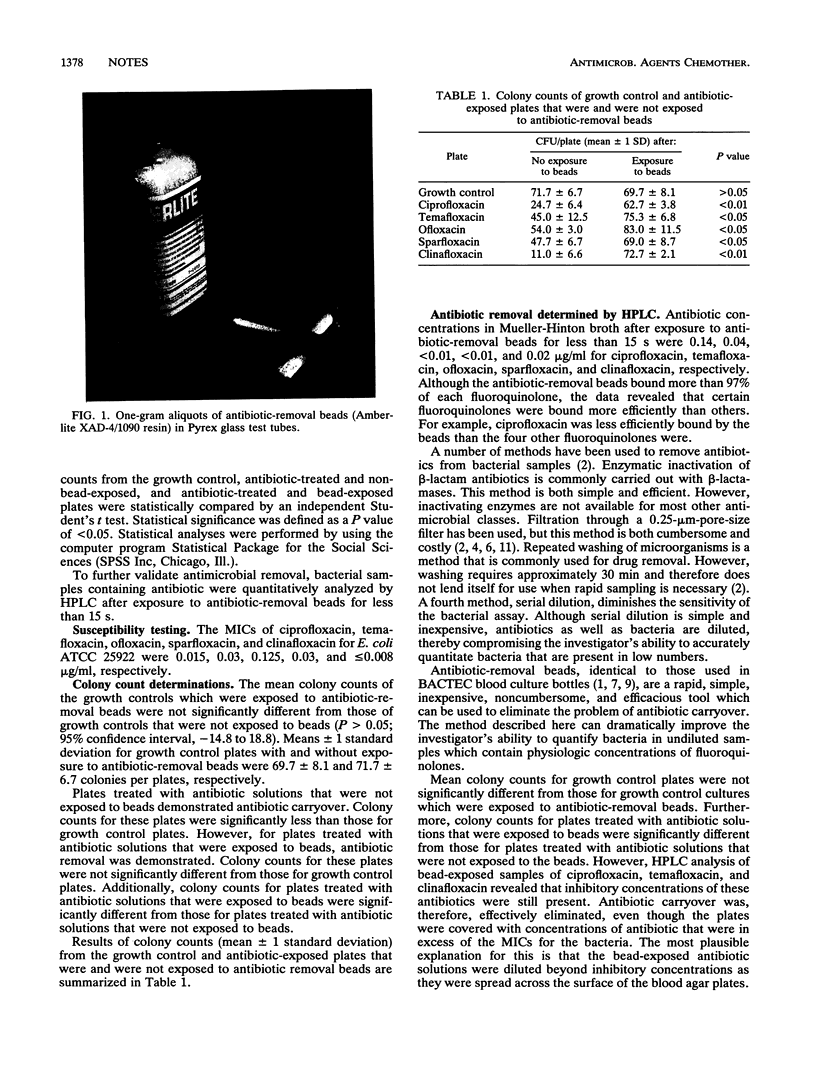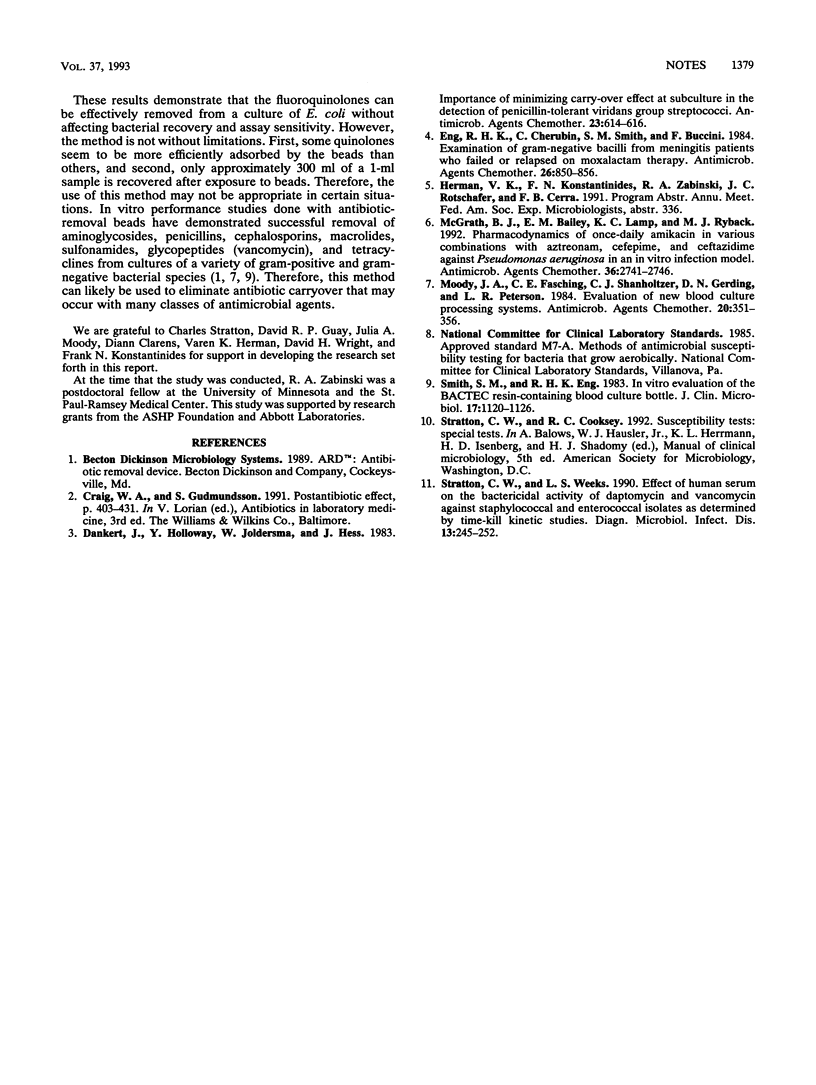Abstract
To prove the utility of antibiotic-removal beads in separating antibiotics from bacterial samples, Escherichia coli ATCC 25922 was exposed to five separate quinolones before and after each was exposed to antibiotic-removal beads. Plates treated with antibiotic solutions that were exposed to beads demonstrated antibiotic removal, and plates treated with antibiotic solutions that were not exposed to beads demonstrated antibiotic carryover. After exposure to beads, fluoroquinolone concentrations decreased from 5 micrograms/ml to 0.14 micrograms/ml (ciprofloxacin), 0.04 micrograms/ml (temafloxacin), < 0.01 microgram/ml (ofloxacin), < 0.01 microgram/ml (sparfloxacin), and 0.02 micrograms/ml (clinafloxacin). These data indicate that antibiotic carryover can be successfully circumvented through the use of antibiotic-removal beads.
Full text
PDF


Images in this article
Selected References
These references are in PubMed. This may not be the complete list of references from this article.
- Dankert J., Holloway Y., Joldersma W., Hess J. Importance of minimizing carry-over effect at subculture in the detection of penicillin-tolerant viridans group streptococci. Antimicrob Agents Chemother. 1983 Apr;23(4):614–616. doi: 10.1128/aac.23.4.614. [DOI] [PMC free article] [PubMed] [Google Scholar]
- Eng R. H., Cherubin C., Smith S. M., Buccini F. Examination of gram-negative bacilli from meningitis patients who failed or relapsed on moxalactam therapy. Antimicrob Agents Chemother. 1984 Dec;26(6):850–856. doi: 10.1128/aac.26.6.850. [DOI] [PMC free article] [PubMed] [Google Scholar]
- McGrath B. J., Bailey E. M., Lamp K. C., Rybak M. J. Pharmacodynamics of once-daily amikacin in various combinations with cefepime, aztreonam, and ceftazidime against Pseudomonas aeruginosa in an in vitro infection model. Antimicrob Agents Chemother. 1992 Dec;36(12):2741–2746. doi: 10.1128/aac.36.12.2741. [DOI] [PMC free article] [PubMed] [Google Scholar]
- Moody J. A., Fasching C. E., Shanholtzer C. J., Gerding D. N., Peterson L. R. Evaluation of new blood culture processing systems. J Clin Microbiol. 1984 Sep;20(3):351–356. doi: 10.1128/jcm.20.3.351-356.1984. [DOI] [PMC free article] [PubMed] [Google Scholar]
- Smith S. M., Eng R. H. In vitro evaluation of the BACTEC resin-containing blood culture bottle. J Clin Microbiol. 1983 Jun;17(6):1120–1126. doi: 10.1128/jcm.17.6.1120-1126.1983. [DOI] [PMC free article] [PubMed] [Google Scholar]
- Stratton C. W., Weeks L. S. Effect of human serum on the bactericidal activity of daptomycin and vancomycin against staphylococcal and enterococcal isolates as determined by time-kill kinetic studies. Diagn Microbiol Infect Dis. 1990 May-Jun;13(3):245–252. doi: 10.1016/0732-8893(90)90067-6. [DOI] [PubMed] [Google Scholar]



